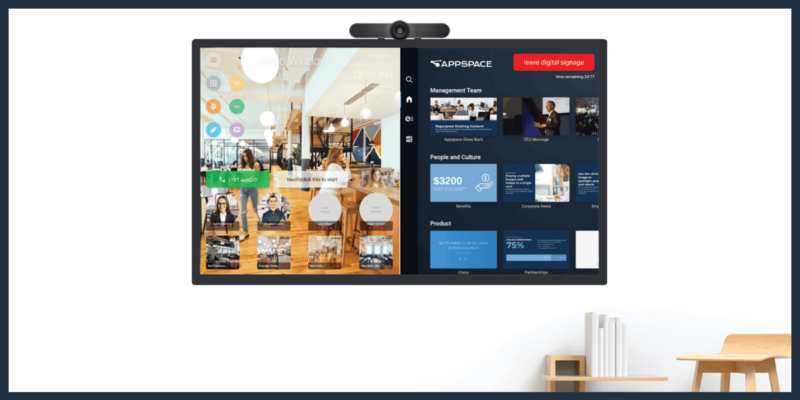Wainhouse Research at InfoComm 2015 (1 of 4)
By Ira Weinstein
Sr. Analyst, Consultant and Partner, Wainhouse Research
Follow me on Twitter at @iweinstein.
The Wainhouse Research (WR) video conferencing / AV team took InfoComm 2015 by storm. For those of you keeping track, this is Ira’s 26th (yes — not a typo) InfoComm. As always, InfoComm provides access to a wealth of information about products, services, and companies… as well as the chance to catch up with old friends.
As always, we tried to meet with as many companies as possible during this far-too-short event. Our write-up represents what we saw and deemed interesting. This is not to say that other companies did not have something interesting to say at the event … it just means that we didn’t have a chance to drop by.
Video Conferencing Updates
Video conferencing (VC) continues to be an area of significant innovation and change. At InfoComm 2015 (and even before the show during pre-briefings), we met with both new companies just entering the video conferencing space, and existing players announcing new releases and enhancements.
Telephony players Grandstream and Yealink demonstrated their debut group video conferencing systems. Grandstream’s GVC3200 (MSRP of $3,999) is an Android-powered, standards-based (SIP) set-top video conferencing system that supports 1080p video resolution and includes an embedded 9-way (for VGA resolution) video bridge. Notable features include support for three displays (two of which can be used to display far-end sites during a multipoint call), and the use of a Bluetooth remote control with touchpad. In addition, the GVC3200 allows users to install third-party Android apps (e.g. Google Hangouts, Microsoft Lync / Skype for Business, etc.), and supports multi-point calls with different types of systems. For example, the system could host a call including two SIP callers, one Lync user, and one Google Hangouts user. This is the first time we’ve seen this level of interop in a video endpoint (instead of within a video bridge / gateway). See our video below for more information.
Yealink demonstrated a portfolio of standards-based (SIP), 1080p-capable group video conferencing systems including the VC110 (includes an integrated microphone, PTZ camera with 4x optical zoom, MSRP of $1,999), the VC120 (includes a microphone pod / phone, PTZ camera with 18x optical zoom, MSRP of $5,499), and the VC400 (similar to the VC120, but includes a 4-site 1080p-capable video bridge that can be upgraded to 8-site, MSRP of $8,000). While we are not aware of any specifically innovative features, the fact that Yealink entered the space with a portfolio of endpoints is certainly noteworthy. Hopefully we’ll be able to test these systems in the near future.
Polycom demonstrated the newly announced RealPresence Web Suite, a re-creation of the company’s CloudAxis Suite. The first key feature of Web Suite is browser-based (WebRTC) video conferencing with an innovative twist – during calls with up to three WebRTC clients, the media routes directly between the participating endpoints (the signaling, however, routes via the Polycom platform). When a fourth participant joins, or when a non-WebRTC system / client connects, the call is automatically transferred to the RealPresence Platform / MCU. Essentially, this means that MCU resources are used when needed, and not for every single connection. The second key feature is support for multi-stream content sharing that allows participants to share / view up to six content channels simultaneously. Users can upload content to be shared in advance, or share their desktop or a single application. Annotation and digital white boarding are also supported. While WR has yet to test these capabilities, the specs behind Web Suite – especially in the content sharing area — are quite impressive. But perhaps more importantly, we view this as the first public example of Polycom’s mindset shift away from just audio and video, and toward collaboration.
Polycom also announced RealPresence Media Suite, a software-based video content management solution that Polycom is positioning as YouTube for the Enterprise. It’s available in two flavors; standard (for smaller deployments) and professional (includes enterprise content delivery network / ECDN support and other enterprise-grade functions). Media Suite allows users to upload existing video content, capture content using his webcam, or instruct the system to dial into a virtual meeting room (VMR) and record (and even stream) the meeting in progress. The system allows users to view content via his web browser or from within their VMRs. In addition, Polycom announced global availability of its RealPresence Cloud offering.
Fresh off the Cisco Live / C-Scape event just a week earlier, Cisco treated WR to a private booth tour. Highlights of the tour included an exceptional demo of the Cisco tracking camera, which worked amazingly well despite the almost deafening booth noise, and a demo of support for Lync / Skype for Business connections to WebEx CMR. The company also announced a new, HD-capable video phone, the 8865 (which replaces the 9900 series, and uses the same technology as the SX-10).
StarLeaf treated booth visitors to a demo of its Skype for Business / Microsoft Lync meeting room solution — the GTm 5220. The 5220 is an integrator friendly group video conferencing system that registers directly to Microsoft Lync and Office 365. Key features include support for multiple screens, various camera options, and the company’s touch controller UI. According to company execs, despite how it appears, this is not a departure from the company’s heavily touted cloud strategy. Instead, this is a direct response to enterprise market requirements. The company also showed the StarLeaf SBC. Positioned by StarLeaf as, and we quote, “the industry’s first video session border controller,” the SBC is available as an appliance or virtual machine and supports direct calling from one environment to any other environment (e.g., from Lync environments to Cisco-powered environments).
Ricoh demonstrated the V3500, a 720p-capable group video conferencing system based on Vidyo technology with a US MSRP of $2,200. The V3500 is a portable device that includes a 4x digital zoom camera, microphone, and speakers, and is specifically designed to connect to the Ricoh video conferencing service.
Acano announced several new capabilities at InfoComm. In no particular order, the first announcements focus on enhancements in the NAT / firewall traversal area including the addition of support for SIP and Lync / Skype for Business on its Edge server, and improved tunneling over port 443 which enhances the ability to connect from external locations (e.g., coffee shops). The second is a new capability Acano calls Dual Home which provides advanced cascading between multi-point calls hosted on Lync servers and calls hosted on Acano. The result is a native experience for participants on each platform. EQRWThe third is the release of a new trial service that supports automated sign-ups and referrals, and includes customer education tools — both designed to expedite and simplify the process of testing the Acano platform.
At the Blue Jeans Network (BJN) booth, WR saw a demo of the company’s Apple Watch application, which provides meeting notifications, a view of upcoming meetings, a time-to-meeting countdown, and one-touch access for connecting to a meeting on the paired iPhone. In addition, we spent some time using Relay Touch, a client / server application that runs on a customer-provided mobile device located in a group video conferencing room and that enables one-click connections to BJN hosted meetings. The video below demonstrates the workflow of Relay Touch.
During our meeting with Pexip, the company discussed a variety of recent releases and platform enhancements including new mobile clients for iOS and Android devices, multi-protocol (SIP, H.323, and WebRTC) registration capabilities, and the ability to control registrars through its external policy servers.
Videxio announced support for Skype and Skype for Business connections to Videxio-hosted VMRs. In addition, the company has enabled point-to-point (direct) video calling with content sharing between Microsoft Lync / Skype for Business users and traditional Cisco / Polycom video systems. We were also interested to learn that Microsoft Lync / Skype for Business currently represents ~30 percent of Videxio’s video call traffic.





